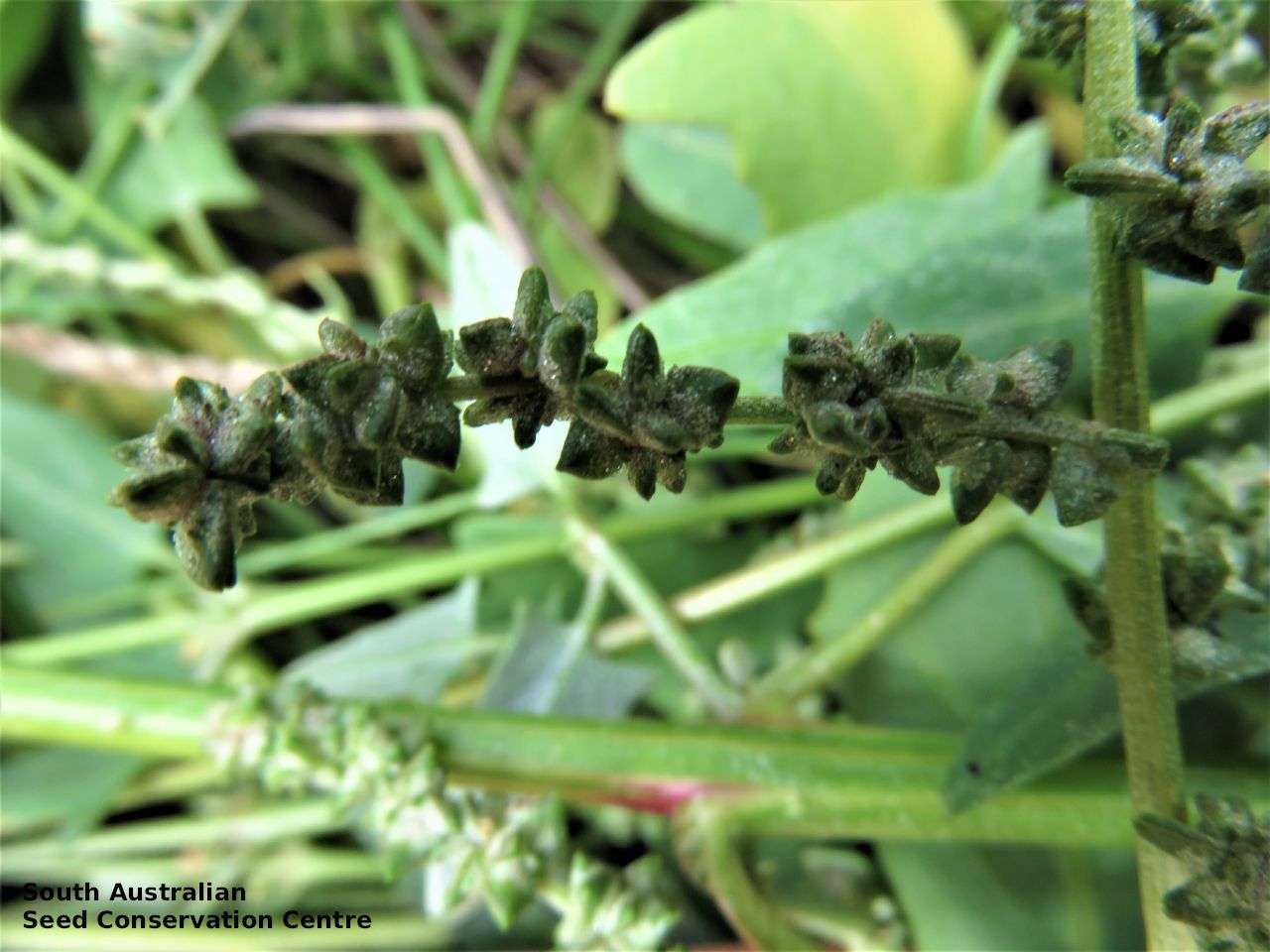





Botanical art
Prior names
Atriplex hastata var. salina
Atriplex hastata
Common names
Hastate Orache
Creeping Saltbush
Etymology
Atriplex from the Latin 'atriplexum' meaning an orache, a saltbush, an Ancient Latin name for this plant. Prostrata from Latin meaning flat on the ground or prostrate, referring to the species' habit.
Distribution and status
Native to Europe, Asia and North America, the species is introduced and found in the southern part of South Australia, growing in wet somewhat saline situations, particularly creek margins and estuaries. Also found in Western Australia, New South Wales, Victoria and Tasmania. Introduced. Common in South Australia. Common in the other states.
Herbarium regions: Flinders Ranges, Eyre Peninsula, Northern Lofty, Murray, Yorke Peninsula, Southern Lofty, Kangaroo Island, South Eastern, Green Adelaide
NRM regions: Adelaide and Mount Lofty Ranges, Eyre Peninsula, Kangaroo Island, Northern and Yorke, South Australian Arid Lands, South Australian Murray-Darling Basin, South East
AVH map: SA distribution map (external link)
Plant description
Monoecious, prostrate to erect annual herb to 50 cm high with angular branches. Leaves petiolate, glabrous or commonly mealy beneath; lower leaves opposite, triangular-shaped, to 7 cm long and 6 cm wide, entire or sparsely toothed; upper leaves alternate, triangular to ovate with tapered bases, smaller than lower. Inflorescence an open spikes with male and female flowers mixed within small clusters. This species is similar to the native Atriplex australasica which have lower leaves lanceolate, entire to deeply serrate, if hastate then with forwardly directed basal lobes, compared to this species which have lower leaves triangular or hastate with spreading or slightly backwardly directed basal lobes. Flowering throughout the year. Fruiting bracteoles sessile, ovate, or triangular, to 6 mm long, free virtually to base, somewhat thickened with spongy tissue at least toward base, margins entire or toothed, dorsal surface smooth or with a pair of broad tubercles. Seed embryo type is peripheral.
Seed collection and propagation
Collect seeds between January and December. Collect fruits that are starting to dry or and turn brown. Fruits can be collected directly from the bush or from the ground underneath. Place the fruits in a tray and leave to dry for one to two weeks. No cleaning is required if only the fruits are collected. The seed can be stored in the fruit or can be cleaned further. Rub the fruit gently by hand to dislodge the seeds. Use a sieve to separate the unwanted material. Store the seeds with a desiccant such as dried silica beads or dry rice, in an air tight container in a cool and dry place. Seed viability is usually high.
| Location | No. of seeds (weight grams) | Number of plants | Date collected | Collection number Collection location | Date stored | % Viability | Storage temperature |
|---|---|---|---|---|---|---|---|
| BGA MSB | 42,000 (38.1 g) 42,000 (38.1 g) | 20-Apr-2007 | RJB71421 Southern Lofty | 1-Aug-2007 | 100% | +5°C |
Number of plants: This is the number of plants from which the seeds were collected.
Collection location: The Herbarium of South Australia's region name.
% Viability: Percentage of filled healthy seeds determined by a cut test or x-ray.